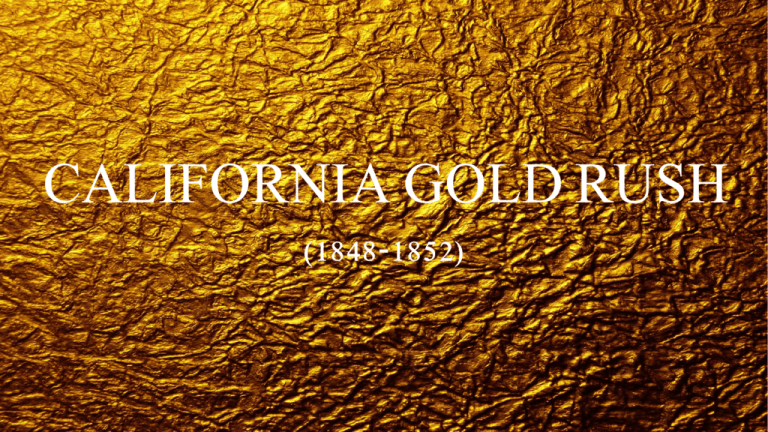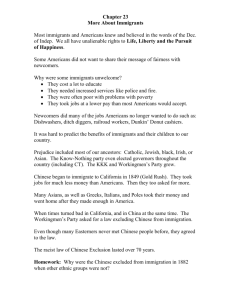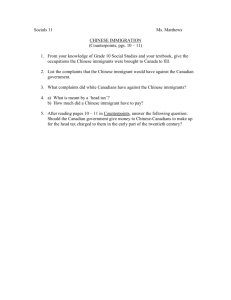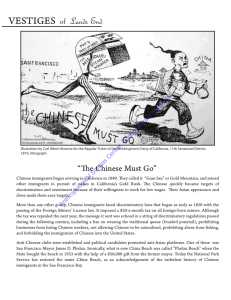John Sutter's
advertisement

CALIFORNIA GOLD RUSH (1848-1852) Discovery and the Forty-Niners • First gold discovered on John Sutter’s Mill, by James Marshall in 1848. • After news broke thousands flooded in to attempt to find gold by 1849. • 2/3 of forty-niners were Americans, the rest came from Mexico, South America, Europe, Australia and China. • Most forty-niners were young and male John Sutter Journey to California There were three ways to get to California from United States… 1. Overland- cutting across the country taking routes like the Oregon or Santa Fe Trail. 2. By ship to Panama in Central America, across dangerous jungles to the Pacific side. 3. By ship around the horn of South America San Francisco Travel hub between those traveling by sea to get to California gold country April 1848 population: 850 December 1849 population: 25,000 • • • • Major growth Culturally diverse Lawlessness/ fighting Illegal activities Life in the Mining Camps There was “a row of canvas tents, [months later] there were two thousand men…and the streets were lined with drinking saloons and gambling tables.” -Luzena Wilson, mining wife at Coyote Diggings camp • Fights over claim boundaries • Often took “justice” into their own hands “In the short space of twenty-four hours we have had murders, fearful accidents, bloody deaths, a mob, whippings, a hanging, and attempt at suicide, and a fatal duel.” -Louise Clappe In the Field Sluice for separation of gold from dirt with water Panning Excavating a river bed after the water has been diverted • Hard, tedious work • Long days (Approximately 16 hours) digging up mud, dirt, and stones while standing knee-deep in icy streams • “The day of quick fortune-making was gone. There are thousands of men now in California who would gladly go home if they had the money.” –Miner, 1851 Chinese Immigrants Between 1848-1852 more than 20,000 Chinese immigrated to California (In 1852, 1 in 10 Californians was Chinese) Originally welcomed by Californians! Once mining became difficult attitudes towards immigrants changed, especially the Chinese. • 1852, state legislature passed law requiring foreign miners to pay monthly fee to mine. • Most immigrants left, Chinese immigrants paid the tax and stayed • Americans began to bully Chinese into leaving (cutting their queues (braids) and burning their shacks) • Many Chinese then left the mines to open businesses or begin farms. Legacy By 1852 the gold rush was over, in that time 250,000 people flooded into California. Positive Legacy Negative Legacy • By 1850, California had • Native American population enough people to become dropped drastically from the first state in the far west warfare and disease • Diverse group of both (between 1848-1870 immigrants and emigrants population went from • Lots of economic 150,000 to 30,000) opportunities • Many Californios lost their land to newcomers • Over $2 billion worth of precious metals were extracted during the Gold Rush • $81 million in gold was extracted by 1852 (then $45 million annually through 1857) The Compromise of 1850 In late 1849, California applied to enter the Union with a constitution preventing slavery, provoking a crisis in Congress between supporters of slavery and abolitionists. According to the Compromise of 1850, proposed by Kentucky’s Senator Henry Clay, California was allowed to enter as a free state, while the territories of Utah and New Mexico were left open to decide the question for themselves. California becomes the 31st state!!







